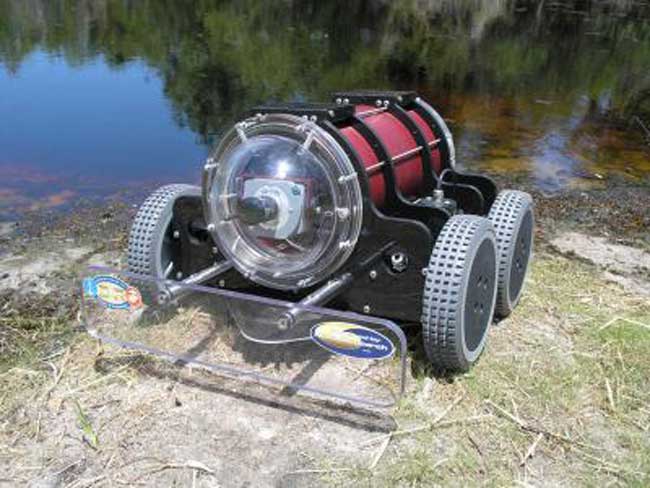Powerful Ideas: Navy Plans Robotic Barnacle Buster

Editor's Note: This occasional series looks at powerful ideas — some existing, some futuristic — for fueling and electrifying modern life.
To help save energy on warships, the navy might one day deploy underwater robots that help vessels conserve fuel by scrubbing their hulls clean to make them cut through the water better.
As harmless as barnacles on hulls might seem to landlubbers, these crustaceans generate "increased drag as these ships move from port to port across the world's oceans," explained Office of Naval Research program officer Steve McElvany.
Barnacles can reduce vessel speed by up to 10 percent, thus requiring ships to raise fuel consumption by as much as 40 percent to counter the added drag. Altogether, gunk stuck on hulls of navy ships translate into roughly $500 million annually in extra maintenance and fuel costs to keep vessels clean.
"The best way to stop barnacles from colonizing is don't let them settle and colonize on the hull in the first place," McElvany said.
With that in mind, the Office of Naval Research recently conducted tests with an experimental underwater hull-grooming robot similar in concept to commercially available robotic home vacuum cleaners or lawnmowers.
The battery-powered machine, dubbed the Robotic Hull Bio-inspired Underwater Grooming tool or Hull BUG, is designed to clamp onto a hull using a suction device and then roam across the vessel's surface much as a robot vacuum cleaner might. It employs a biofilm detector to spot the differences between clean and unclean surfaces, and then may use rotary brushes or water jets to scrub gunk off. When it gets low on power, it will then automatically find its way back to its docking station to recharge.
Sign up for the Live Science daily newsletter now
Get the world’s most fascinating discoveries delivered straight to your inbox.
The idea is to groom ships in port, removing marine life before it gets a chance to get solidly attached. Navy vessels spend more than half of their service life in port, giving barnacles and other marine organisms ample time to settle if allowed.
In recent tests, "the Hull BUG autonomously groomed and removed biofilm from an area on the port midship section of the hull in a preprogrammed pattern," said researcher Geoff Swain at the Florida Institute of Technology, a partner in the Hull BUG's development. Swain said these were "very exciting results."
With the robot, in combination with newly developed environmentally friendly hull coatings that help keep gunk off ships, McElvany estimated, "the navy will save millions of dollars per year in fuel. Using less fuel also means less carbon dioxide in the atmosphere. We are really trying to look very far forward to get the ultimate solution."
Navy ships are not the only vessels that might benefit from the Hull BUG.
"Basically any boat over 45 feet, which is in the water all the time, can benefit from this kind of technology," said Don Darling, president of Palm Beach Gardens-based company SeaRobotics, another partner in the Hull BUG's development.
Ken Holappa, a SeaRobotics engineer, added, "Just like the navy, the savings to the commercial shipping industry stand to be significant in terms of fuel efficiency and in reducing emissions associated with ship operations in our world's oceans."
If everything goes well, "we anticipate a full ship demonstration probably by 2015, which would involve maybe two Hull BUGs running around for a month on a navy ship to show that they're robust," McElvany told LiveScience.
- Video – About the Robotic Barnacle Buster
- Powerful Ideas: Cars Could Run on Watermelons
- More Powerful Ideas










